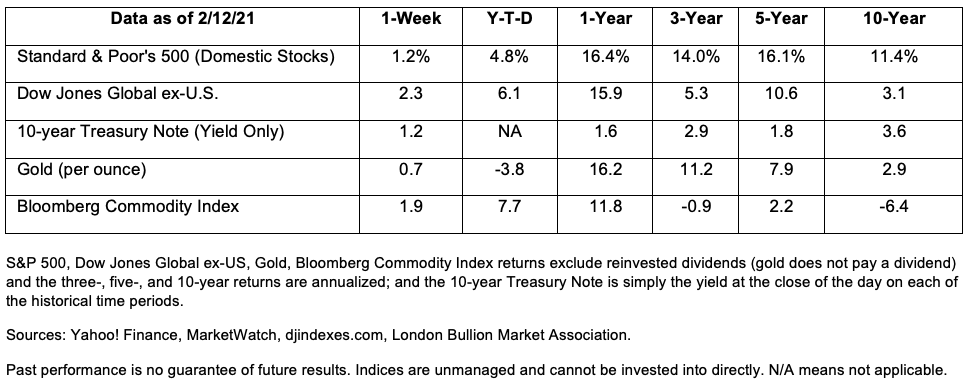
Market Insights:
January 2, 2024
Posted on January 02, 2024
Planning and Guidance, Tailored To Your Life and Goals
Tuesday Takeaway
Posted on February 19, 2021

Way back, when radio disk jockeys played 45-rpm vinyl singles, the A-side of a disk was the song the record company was promoting and the other side – the flip side – held a song that sometimes had an equal or greater impact. For instance, the flip side of Queen’s We Are the Champions was We Will Rock You.
When it comes to the economy and financial markets, flip sides can have significant impact, too. For example:
The flip side: Concern that share prices may not be sustainable. “The long, long bull market since 2009 has finally matured into a fully-fledged epic bubble. Featuring extreme overvaluation, explosive price increases, frenzied issuance, and hysterically speculative investor behavior…this bubble will burst in due time…,” wrote asset manager Jeremy Grantham of GMO in January 2021.
The flip side: Vaccines may not be as effective as many anticipate for two reasons: 1) Some Americans are reluctant to be vaccinated, and 2) Vaccines may not be effective against all strains of the virus.
That seems particularly important since employment gains have slowed. Last week, Carleton English of Barron’s reported, “All told there were 20.4 million workers receiving benefits under programs for the week ending January 23, a 2.6 million increase from the prior week. At this time last year, there were 2.2 million workers receiving benefits.”
The flip side: Too much stimulus could cause the economy to overheat, lead to inflation, and cause the Federal Reserve to raise rates. The bond market has already been pushing rates higher. Last week, the yield on 30-year U.S. Treasuries rose above 2 percent for the first time since February 2020.
The flip side: While many agree U.S. infrastructure needs repair, the cost may be paid through higher taxes. There is ongoing debate about whether tax increases impede or accelerate economic growth, according to Jim Tankersley of The New York Times. In addition, government spending of this type is another form of stimulus, which could heat up economic growth.Last week, Colby Smith of Financial Times reported numerous economists have increased U.S. gross domestic product (GDP) growth estimates for 2021. Estimates ranged from 5.9 percent to 6.3 percent.


Throughout history, inventions and new ways of doing things have changed the world:
It would have been difficult to understand or estimate the long-term value of these innovations. It’s possible some of today’s innovations could have similar impact. One is machine learning. Machine learning uses algorithms to turn a data set into a model that can improve our understanding of a topic. For example, machine learning is being applied to:
You, your friends, and your family. “Much of the most privacy-sensitive data analysis today – such as search algorithms, recommendation engines, and adtech networks – are driven by machine learning and decisions by algorithms. As artificial intelligence evolves, it magnifies the ability to use personal information in ways that can intrude on privacy interests…,” explained Cameron Kerry of Brookings.
